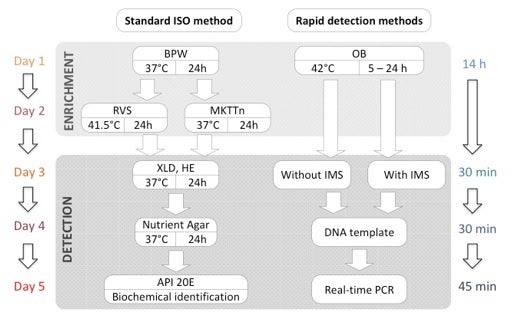Detection of Salmonella in raw duck meat
YUK Hyun-Gyun (Group Leader, Chemistry) () May 11, 201511 May 2015 NUS food scientists developed a real-time PCR based rapid protocol for Salmonella detection on raw duck meat, compared with a minimum 5 days standard method.
Salmonella is a worldwide leading bacterial pathogen that causes foodborne disease. Human salmonellosis accounts for more than 60% of foodborne diseases in Singapore. A team led by Prof YUK Hyun-Gyun and his students from Food Science & Technology Programme in NUS focuses on developing rapid and reliable molecular based method for Salmonella detection on some popular local food matrices such as duck meat.
The team shows that immunomagnetic separation technique (IMS) worked successfully in isolating Salmonella from complex duck meat suspension, significantly enhancing the detection probability as well as shortening the whole detection time compared with a traditional PCR method and a standard culture method. This newly developed protocol based on real-time PCR coupling with IMS enabled a detection of low numbers of healthy and injured Salmonella cells on artificially inoculated duck meat samples within 16 hours.
This method may help us prevent foodborne disease by early detection before releasing duck products into the market.

The figure shows the flow diagrams of standard ISO, IMS-PCR and PCR methods for Salmonella detection. [Image credit: Yuk HG]
Reference
Zheng Q, Miks-Krajnik M, Yang Y, Xu W, Yuk HG. “Real-time PCR method combined with immunomagnetic separation for detecting healthy and heat-injured Salmonella Typhimurium on raw duck wings” International Journal of Food Microbiology. 186 (2014) 6-13.


